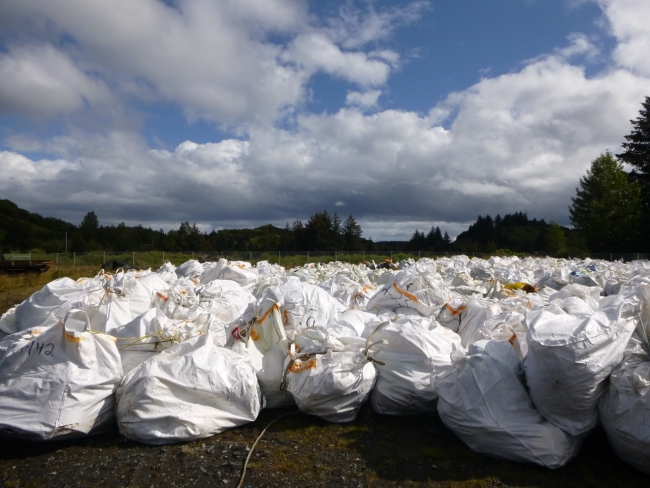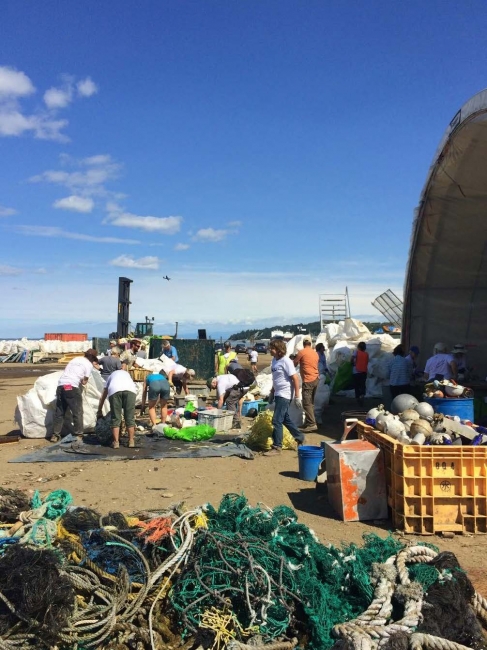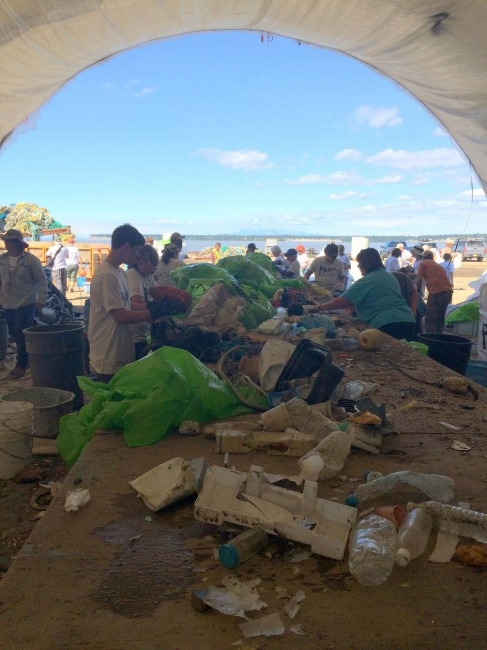By: Peter Murphy, Alaska Regional Coordinator for the NOAA Marine Debris Program
Alaska is characterized by its rugged beauty, remote wilderness, and sheer size-- from North America’s tallest peak at Denali, to the 44,000 miles of shoreline spanning three seas. These facts also play a significant role in the issue of marine debris in the state. With so much coastline, Alaska receives a huge amount of debris every year from both local sources and places across the Pacific Rim. “Catcher beaches,” where the shape and character of the coastline interacts with weather and ocean patterns to deposit huge amounts of debris, are often remote and can accumulate as much as 10-20 tons of debris per mile. Cleaning up debris in these areas can be difficult, but Alaskans are up to the task, using landing craft, helicopters, and good old-fashioned hard work and Alaskan ingenuity to remove debris in rugged and challenging conditions.
The real trick actually begins once the debris is off the beach. In many cases, catcher beaches can be a multi-day boat journey away from the nearest town. Furthermore, those towns have landfills designed to meet the needs of the local communities, which are often small. Dropping tons of marine debris into a landfill that wouldn’t otherwise see that volume for a year can cause significant problems for the community. As a result, landfills are often closed to marine debris, meaning cleanups need to find alternate methods of disposal. Additionally, recycling options are often limited based on the degraded condition of debris that is found on beaches after years of exposure to sunlight and salt water. Because of all these factors, debris from Alaska often needs to be shipped to the “Lower 48” for disposal.
While this issue continues to be a challenge, there are also innovative and exciting efforts across the state to improve the sustainability and cost-effectiveness of disposal. One long-running and successful partnership is in Kodiak between Island Trails Network (ITN) and Threshold Recycling. Threshold is able to accept specific types of marine debris collected by ITN, working with shipping companies and vendors to maximize the amount of recycling being collected locally and to reduce the load on the local landfill. Similarly, in 2016, the Gulf of Alaska Keeper partnered with Parley for the Oceans to conduct a volunteer sorting of marine debris collected from the shorelines of Montague and Kayak Islands, ensuring the maximum amount could be diverted to recycling rather than going to landfills. Over five days, hundreds of volunteers from the Anchorage community sorted over 2,500 cubic yards of debris. In addition, NOAA is part of a coalition including the Global Ghost Gear Initiative and local Alaskan fishing industry, working on a pilot project to remove retired nets from Dutch Harbor on Unalaska Island. “Dutch,” as it’s often called, is the highest-volume fishing port in the United States, and fishing vessels regularly need to retire their nets as they become old and degraded. This project will get these nets bundled and shipped to Europe in order to be recycled by a partner with recycling techniques that allow them to accept these older and more brittle plastics. In the future, the hope is that projects such as these will lead to increased recycling of these retired or derelict nets, preventing them from taking up valuable space in landfills or becoming lost at sea.
These are just a few of the examples of the work being done in Alaska on the issue of marine debris. Many others are doing groundbreaking work to reduce the influx of debris and to better understand the quantity and composition of debris on shorelines. While the challenges in Alaska may be big, so are the opportunities, and there’s an active and innovative community with the ingenuity and passion to take them on.





So cool! Thank you for doing all the work!